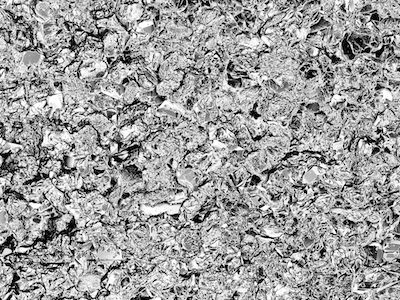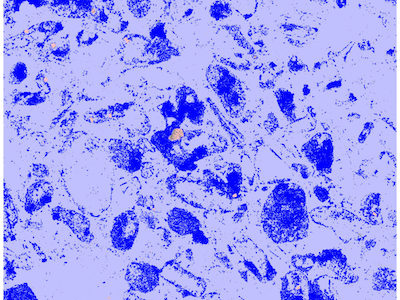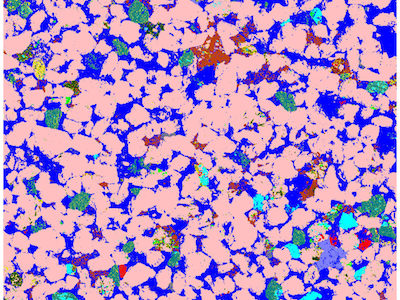For example, due to chemical attractions and repulsions, some fluids may easily wet the surface of a certain mineral, while other fluids may not. Understanding this affinity of different phases (oil, brine or gas) to different types of rock helps in determining how fluids occupy the pores within the rocks. This understanding of fluid occupancy grants insight into how fluids are produced from petroleum reservoirs.
To gain experimental insight into the mineralogy of reservoir rocks, three main pieces of equipment at the COIFPM are used: a QEMSCAN 650F, a Helios 650 Focused Ion Beam Scanning Electron Microscope (FIB-SEM), and a Helios G3 FIB-SEM. The QEMSCAN has multiple EDS detectors that work in concert with advanced mineral identification software. The QEMSCAN possesses the unique and important capacity to map the mineralogies of large areas of rock sample.
The FIB-SEM instruments each have one easily retractable EDS detector with software most effectively used for elemental (rather than mineralogical) analysis. This makes them ideal for high-resolution scans that can be used not only to create elemental maps of very small areas, but also to cross-check analyses made by the QEMSCAN. The dual beam FIB-SEM setup also allows for 3D imaging of rock samples, where the electron beam (SEM) takes images as the ion beam (FIB) slices away the rock. At points during 3D imaging, the EDS detectors of the FIB-SEM’s can be used to identify certain minerals observed throughout the 3D imaging volume. By using the QEMSCAN and FIB-SEM instruments in tandem, the mineralogies of rock samples can be studied at a variety of scales in both 2D and 3D in order to properly characterize them for extensive use in understanding and optimizing the production of oil and gas.
GALLERY



